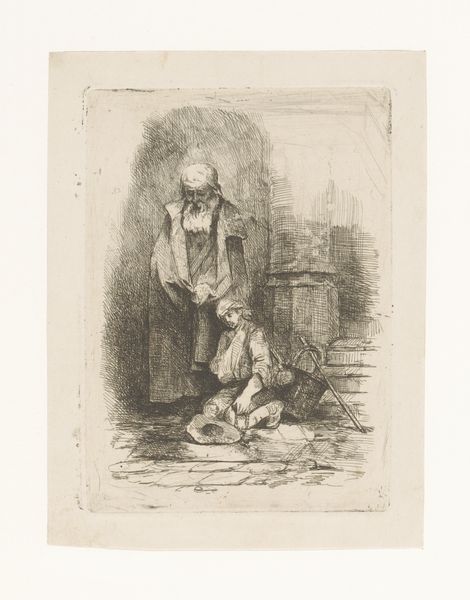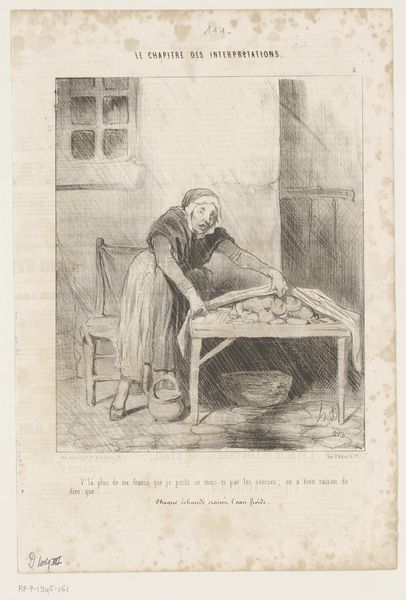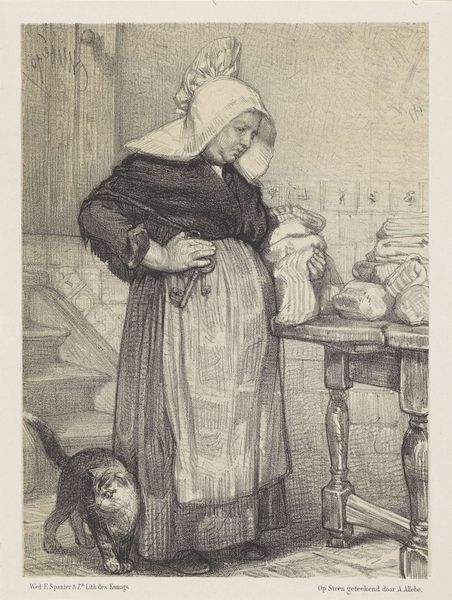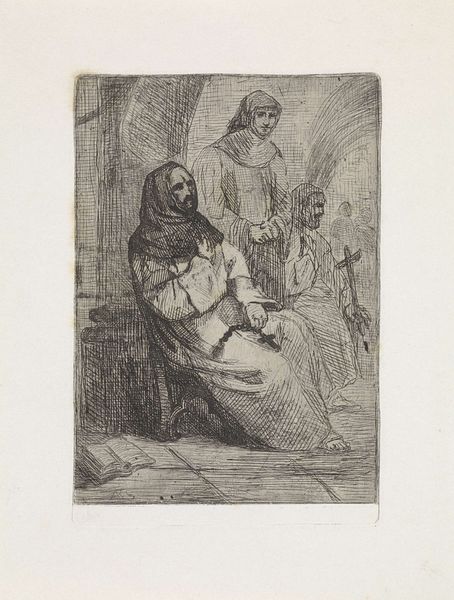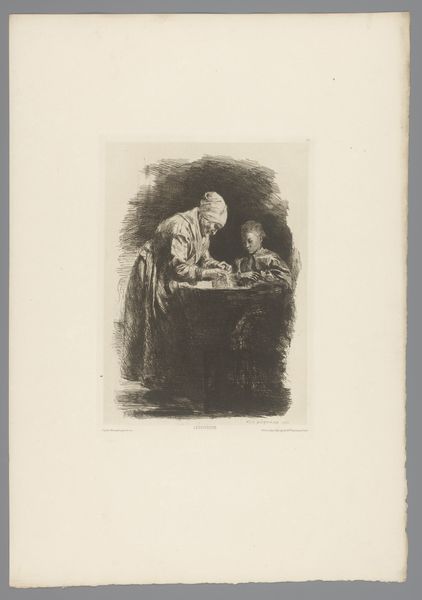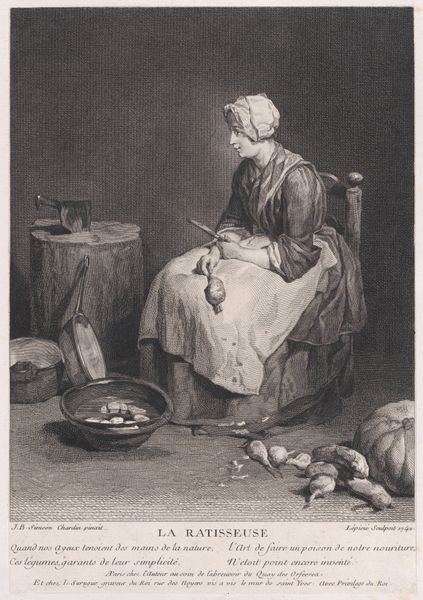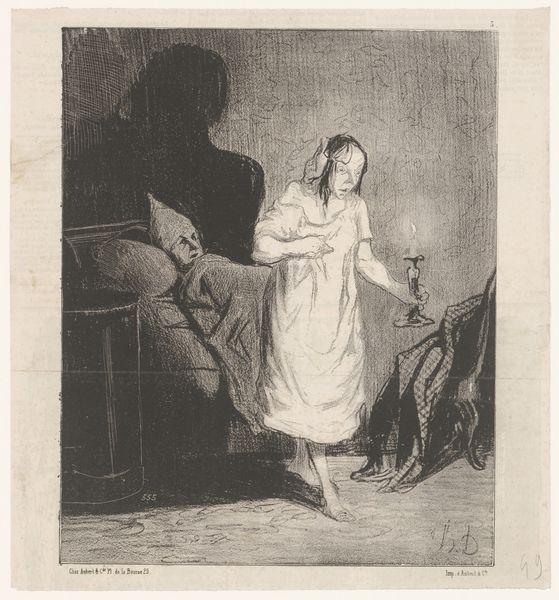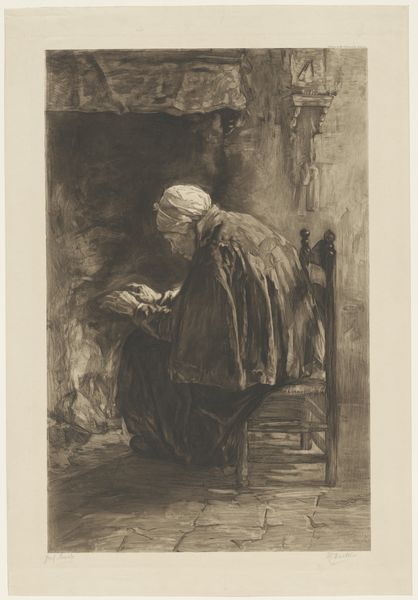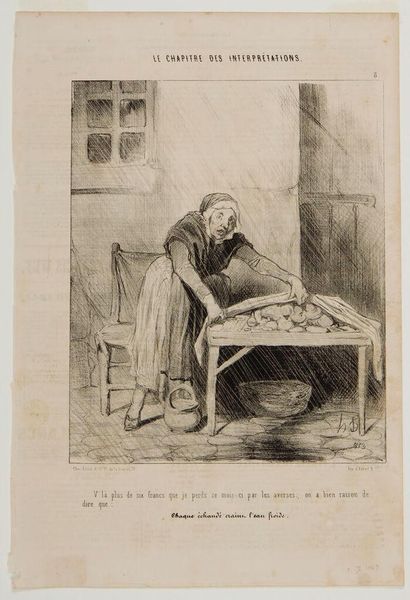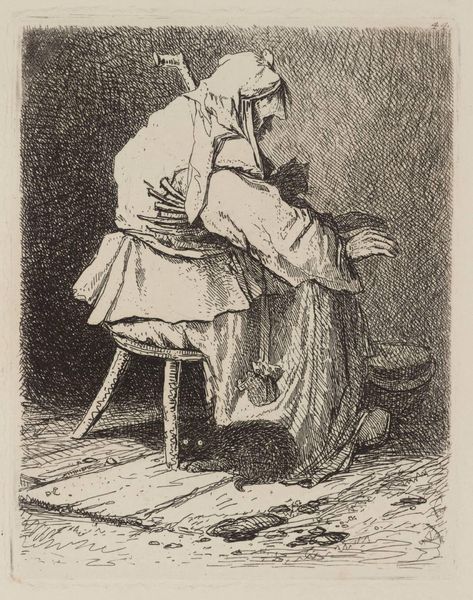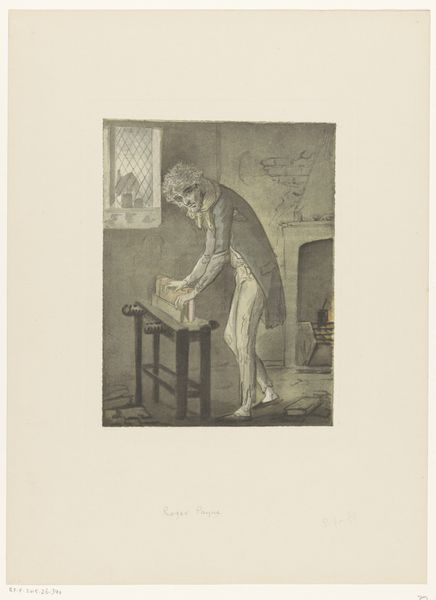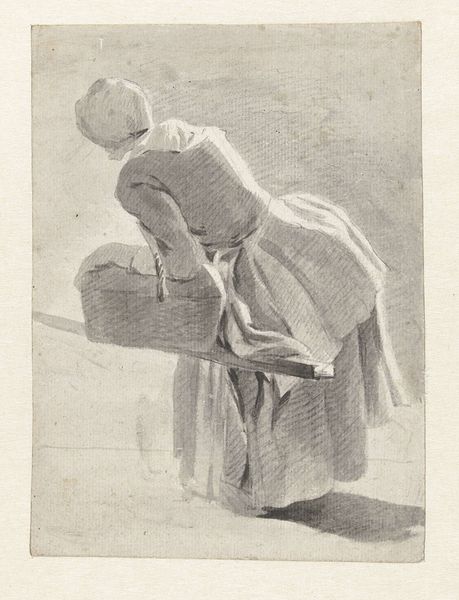
drawing, print, etching, paper
#
portrait
#
drawing
# print
#
etching
#
paper
#
genre-painting
#
realism
Dimensions: 242 × 178 mm (plate); 277 × 219 mm (sheet)
Copyright: Public Domain
Curator: Looking at Jules de Goncourt’s 1862 etching, "Meal for a Convalescent," the stark lines immediately convey a somber domestic scene. What's your take? Editor: The high contrast evokes a sense of austerity, wouldn't you say? It feels weighted with the unsaid difficulties of providing care. Her downcast gaze and the humble meal speak volumes about class and gender in mid-19th century France. Curator: Indeed. As a print, specifically an etching, this work allows for a wide distribution, meaning this scene of daily life could reach a broad audience. Consider the process: the artist coats a metal plate, incises the design, and then uses acid to bite into the lines, a labour-intensive act of reproduction that underscores its accessibility to the working classes and beyond. Editor: And that process of distribution is key to understanding its social impact. Prints democratized art. They became a tool for disseminating ideas, narratives of hardship but also potentially critiques of societal structures regarding caregiving and health, which were so unevenly distributed. Was Goncourt consciously making a political statement? Curator: It's subtle, but it’s there in the quiet dignity afforded to the woman. The materiality reinforces that; etching allows for detailed linework, capturing the texture of her dress, the modest contents on the table. Each element suggests both the limitations and the resilience of those in similar circumstances. What raw materials, from paper to ink, made such expressions possible? Editor: The material and the making—etching itself—are tools. This piece gives form to lives often rendered invisible. To consider gendered labour here is unavoidable, highlighting that in tending to the sick, she too becomes subsumed by material need, made to serve a system and circumstances larger than herself. How can we divorce that gendered expectation from considering her labour, artistic or domestic? Curator: They intertwine, without a doubt. What's so affecting about Goncourt's choice is that he refrains from sentimentality, rendering the scene with a grounded sense of reality that allows viewers to contemplate the larger framework of hardship that would require it. Editor: Exactly. The image makes you consider that, like an etching plate itself, her role has been incised and set, hardened by structures of expectation, even of endurance. Her pose is timeless as well as time-worn. Curator: Food for thought, indeed. I find myself thinking differently about both its historical and material qualities after this conversation. Editor: Me too, and hopefully that’s what our listeners take away as well: to examine both how and why these artworks still resonate today.
Comments
No comments
Be the first to comment and join the conversation on the ultimate creative platform.

